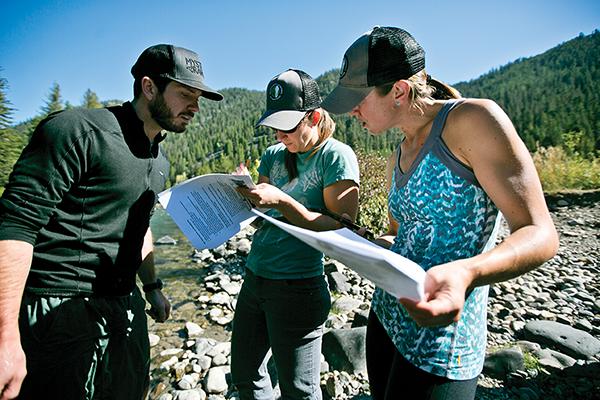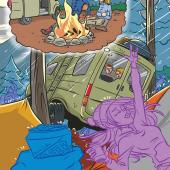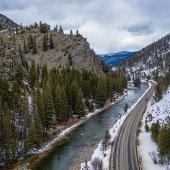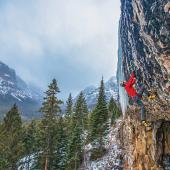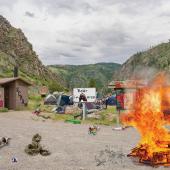Puny Pollutant
Adventure, science & microplastics in the Gallatin.
The Gallatin River is Bozeman’s lifeblood: Bozemanites depend on this river system for drinking water, love it for its recreational opportunities, and recognize its importance to maintaining a healthy, functional natural environment.
But all of this is threatened. Careless natural-resource extraction, shortsighted development, stresses of a booming population, recreational abuses, and climate change all place mounting pressures on the natural resource systems that make this place unique. Yet, the Gallatin Valley community is one marked by grit and determination, and we don’t take lightly to our environment facing peril. Confronted with a new crisis, Bozemanites have again shown up for the fight.
For the last year and a half, Adventure Scientists, along with a team of 100 local citizen-scientist volunteers, has been working to understand the extent of microplastic contamination in our watershed. By identifying the magnitude of this threat, we hope to empower our community to address this problem that affects the Gallatin and all who depend on her clean waters.
A New Plastic on the Block
Since 2013, the Bozeman-based conservation organization Adventure Scientists has worked to expose the alarming number of microplastics entering our waterways worldwide. Microplastics, or tiny pieces of plastic, pose detrimental effects to environmental and human health when they enter natural systems. These petroleum-based particles, like all plastics, are able to absorb and release toxins, and once introduced into the food chain will bioaccumulate: microplastics in plankton become microplastics in small fish, then big fish, then raptors… and yes, microplastics in you.
The numbers we uncovered in our global investigation are staggering: currently 78% of samples we have analyzed from marine and freshwater sites around the world contained microplastics. In light of the ubiquitous presence of this pollutant, and with a desire to engage on this topic in our own back yard, we launched the Gallatin Microplastics Initiative in 2015.
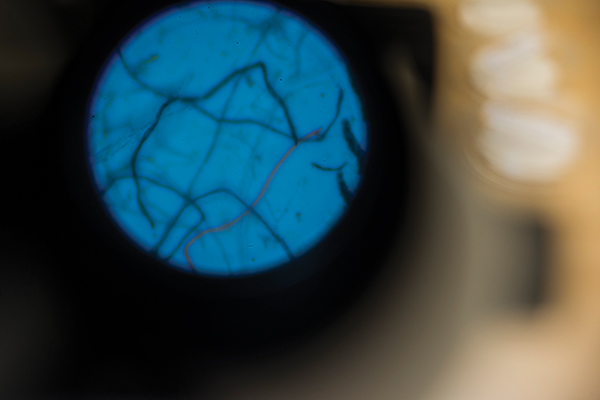 Microplastics under the microscope.
Microplastics under the microscope.
Gallatin Under Study
To understand the breadth and depth of the problem in the Gallatin watershed, we assembled a team of adventure scientists—capable outdoors women and men committed to conservation—and trained them as microplastics sample-collectors. These volunteers head to 70 critical points on the Gallatin and its tributaries once each season on foot, bike, boat, skis, and snowshoes to collect water samples. Our partner scientist, Abby Barrows, analyzes these samples for the quantity and type of microplastic particles—information essential to knowing the severity of the problem, and that may offer insight on how to address it.
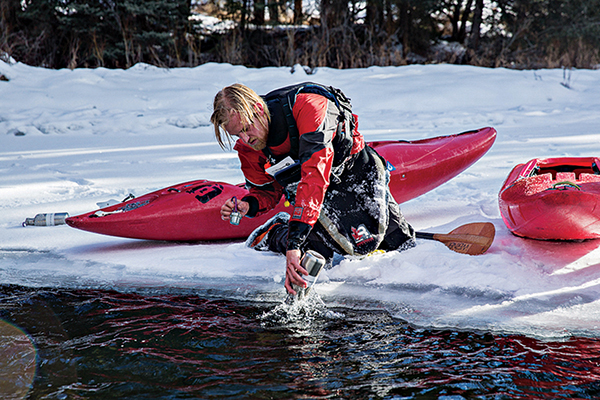 Citizen scientist hard at work.
Citizen scientist hard at work.
We are now one and a half years into our study, and preliminary data show 62% of samples collected in our Gallatin Initiative contain microplastic pollution. Contaminated samples have come in from backcountry and urban sites alike, and while we can’t say precisely from where these microplastics are entering our waterway, we can say why: studies from around the world show major sources of microplastic pollution to include the washing of synthetic fabrics, larger plastic product degradation, and plastic microbeads in cosmetic products.
This is a problem affecting all Bozemanites. Microplastic contamination is pervasive and any solutions will require a focused community effort. As our study progresses and we better understand precisely the problem at hand here in our beloved Gallatin watershed, we will continue working with Bozemanites to share ways we may address this problem, and in so doing establish Bozeman as a leader in communities around the world for tackling this invisible threat.
Katie C. S. Holsinger is the Microplastics Project Manager at Adventure Scientists. If you’re interested in becoming involved as an adventure scientist on this or any one of our conservation projects, visit adventurescientists.org.


